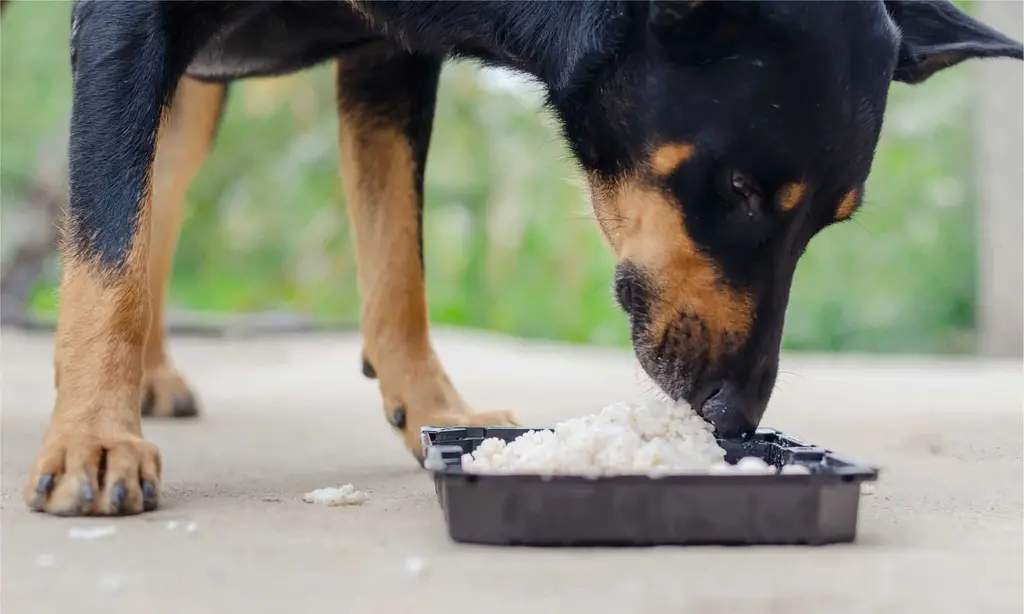Ever found yourself in the kitchen, stirring a pot of fragrant rice, when your four-legged friend gives you that look? You know the one those big puppy eyes that seem to say, “Hey, can I have some too?” Well, you’re not alone. Many dog owners wonder, “Can dogs eat rice?” It’s a question that pops up as often as dogs beg for table scraps. In this comprehensive guide, we’ll dig into the nitty gritty of feeding rice to your canine companion, exploring everything from the potential benefits to the precautions you should take.
Can Dogs Eat Rice? What You Need to Know
Let’s start with the basics: rice isn’t just rice. When we talk about whether dogs can eat rice, we need to consider the different types available. Just like humans, dogs can react differently to various grains, so it’s crucial to understand what you’re dealing with.
Rice Basics: Not All Grains Are Created Equal
There are three main types of rice you might consider feeding your dog:
- White rice: The most common variety, it’s easily digestible and often recommended for dogs with upset stomachs.
- Brown rice: A whole grain option with more fiber and nutrients, but potentially harder to digest.
- Wild rice: Not technically rice, but a nutritious seed that can be a healthy addition to a dog’s diet in moderation.
Here’s a quick nutritional comparison:
| Type of Rice | Calories (per cup) | Fiber | Protein | Key Benefits |
|---|---|---|---|---|
| White Rice | 205 | 0.6g | 4.3g | Easy to digest, good for upset stomachs |
| Brown Rice | 216 | 3.5g | 5g | More nutrients, higher in fiber |
| Wild Rice | 166 | 3g | 6.5g | Rich in antioxidants, lower in calories |
As you can see, each type of rice offers different nutritional profiles. This brings us to our next big question…
Is Rice Safe for Dogs? Let’s Break It Down
The short answer is yes, rice is generally safe for dogs to eat. In fact, it can be a helpful addition to their diet when used correctly. But like any food, it comes with its own set of pros and cons.
The Good News: Benefits of Rice for Canines
Rice can be a valuable part of a dog’s diet for several reasons:
- Easy digestibility: Especially white rice, which is why it’s often recommended as part of a bland diet for dogs with gastrointestinal issues.
- Energy source: Rice is a good source of carbohydrates, providing quick energy for active dogs.
- Potential tummy-soothing properties: The binding nature of rice can help firm up loose stools.
“Rice can be a helpful food for dogs, particularly when they’re experiencing digestive issues,” says Dr. Sarah Wooten, DVM. “It’s easy on the stomach and can provide necessary calories when a dog isn’t feeling well.”
Rice is often considered a healthy food for dogs, especially when they need a gentle option for their stomach. Its role as a digestive food can be particularly helpful during bouts of gastrointestinal upset.
Hold Up: When Rice Might Not Be Nice
While rice can be beneficial, it’s not without its drawbacks:
- Allergies and sensitivities: Some dogs may be allergic or sensitive to grains, including rice.
- Portion control concerns: Rice is calorie-dense, so overfeeding can lead to weight gain.
- Risks of seasoned or flavored rice: Plain is best – seasonings, oils, or other additives can be harmful to dogs.
It’s crucial to introduce rice (or any new food) to your dog’s diet gradually and watch for any adverse reactions.
How to Serve Rice to Your Four-Legged Friend
If you’ve decided to add rice to your dog’s menu, here’s how to do it right:
Cooking Rice for Canine Consumption
- Rinse the rice thoroughly to remove excess starch.
- Cook the rice in plain water – no salt, butter, or seasonings.
- Let it cool completely before serving.
- For extra digestibility, you can cook the rice slightly longer than you would for human consumption.
Portion Pointers: How Much Rice Can Dogs Eat?
The amount of rice you feed your dog should depend on their size, overall diet, and health status. As a general rule:
- Small dogs (under 20 lbs): 1-2 tablespoons of cooked rice
- Medium dogs (20-50 lbs): 1/4 to 1/2 cup of cooked rice
- Large dogs (over 50 lbs): 1/2 to 1 cup of cooked rice
Remember, these are just guidelines. Rice should never make up more than 10% of your dog’s daily caloric intake.
Rice as Part of a Balanced Diet: What Vets Say
Veterinarians often recommend rice as part of a dog’s diet, especially in certain situations:
When Vets Recommend Rice for Dogs
- Upset stomach scenarios: A bland diet of chicken and rice is a common prescription for dogs with diarrhea or vomiting.
- Prescription diets: Some veterinary diets for specific health conditions include rice as a key ingredient.
Dr. Jennifer Coates, DVM, notes, “While rice can be helpful for dogs, especially during gastrointestinal upsets, it’s important to remember that dogs are primarily carnivores. Their main diet should consist of meat-based proteins.”
Rice Alternatives: Other Dog-Friendly Grains
If you’re looking to diversify your dog’s grain intake, consider these options:
- Quinoa: High in protein and essential amino acids
- Oats: Rich in fiber and beneficial for heart health
- Barley: Packed with vitamins and minerals
Each of these can be a helpful for health addition to your dog’s diet when used in moderation.
Common Questions About Dogs Eating Rice
Let’s address some frequently asked questions:
Can dogs eat rice every day?
While rice is safe for dogs, it shouldn’t be a daily staple. Variety is key to a balanced diet.
Is brown or white rice better for dogs?
Both can be beneficial. Brown rice for dogs offers more nutrients, but white rice for dogs is easier to digest, making it better for upset stomachs.
Can puppies eat rice?
Yes, puppies can eat rice, but it should be introduced gradually and in small amounts.
Tasty and Safe Rice Recipes for Dogs
Want to get creative with your pup’s rice intake? Try these simple recipes:
Simple Chicken and Rice Meal
- 1 cup cooked white rice
- 1/2 cup boiled, shredded chicken (no seasoning)
- 1/4 cup cooked, mashed carrots
Mix all ingredients and serve in appropriate portions based on your dog’s size.
Veggie Rice Bowl for Dogs
- 1 cup cooked brown rice
- 1/4 cup cooked, diced sweet potato
- 1/4 cup cooked, chopped green beans
- 1 tablespoon plain, low-fat yogurt
Combine all ingredients, ensuring everything is cooled before serving.
The Bottom Line: Rice Can Be Nice for Dogs
In conclusion, rice can indeed be good for dogs when used appropriately. It’s a versatile, easily digestible grain that can provide energy and soothe upset stomachs. However, like any food, it should be given in moderation and as part of a balanced diet.
Remember:
- Always introduce new foods gradually
- Watch for any signs of allergies or sensitivities
- Consult with your veterinarian before making significant changes to your dog’s diet
By following these guidelines, you can safely incorporate rice into your furry friend’s meal plan, potentially boosting their health and happiness. After all, a well-fed dog is a happy dog!
Have you tried feeding rice to your dog? We’d love to hear about your experiences in the comments below. And if you have any questions about your dog’s diet, don’t hesitate to ask your vet – they’re your best resource for personalized pet health advice.









